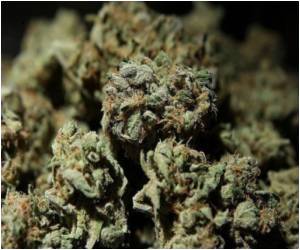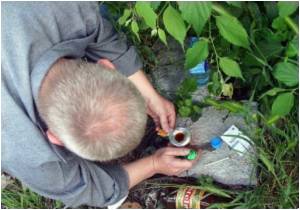
Local authorities said the arrival of genetically modified seeds, which are imported from Europe and the United States have allowed "a bigger production and better quality at the same time".
A police commander in the Cauca region where Cali is located, Carlos Rodriguez, said one of the modified varieties goes by the name, "Creepy".
Another seed modified in The Netherlands is fetching a good price in the area, said a foreign researcher, who asked to remain anonymous. That version, well-known in Europe as "La Cominera", is named for the Colombian village where it grows.
"La Cominera's" higher value is due to its increased concentration of THC, the plant's principal active ingredient, and the modified plant verges on an 18 percent concentration level, compared to a normal marijuana plant's two to seven percent, said the researcher.
Despite the fact that marijuana production is illegal in Colombia, farmers say they continue to sell both traditional and modified marijuana because of economic advantages. One resident who spoke on the condition of anonymity said he can sell 11 kilograms of marijuana for 160,000 Colombian pesos ($87).
Advertisement
"I don't like growing marijuana, but it ended up that way," one farmer said. "I received a loan to grow coffee, but I was drowning and I had to sell my harvest very cheap. My sister told me it would be better to plant marijuana."
Advertisement
They added they cannot sustain themselves on coffee and banana crops alone, because prices fluctuate widely and it is difficult to reach markets in time to sell the perishable items before they spoil, due to a poor road network.
The hemp plant was originally legally used in the production of textiles and soccer balls until 1962, when authorities banned the use of marijauana in those products in order to comply with international standards.
According to botanist Luis Miguel Alvarez, a teacher at the University of Caldas in Manizales and the author of several marijuana studies, after marijuana is grown and dried, it can endure long periods without spoiling, which is a strong economic advantage.
Police commander Rodriguez said the crop's growth poses a problem for local law enforcement, because profits are often used to finance other criminal activity.
"We believe that the sixth front of the FARC guerrilla forces are 90 percent financed by marijuana," he said. The Revolutionary Armed Forces of Colombia is Latin America's largest and longest-fighting insurgency with 47 years of armed struggle and 8,000 fighters.
Marijuana production and sales are growing in Colombia, which was also the world's biggest producer of cocaine in 2009, according to available statistics, he said.
"This year we have already seized 27 tons (of marijuana by June), compared to 23 tons last year. It is troubling that the resources of armed groups are growing and because of this they can acquire arms and explosives," Rodriguez said.
Nationwide, authorities say they have seized 41.8 tons of marijuana to date in 2011, compared to a total of 228 tons in 2010.
Source-AFP













